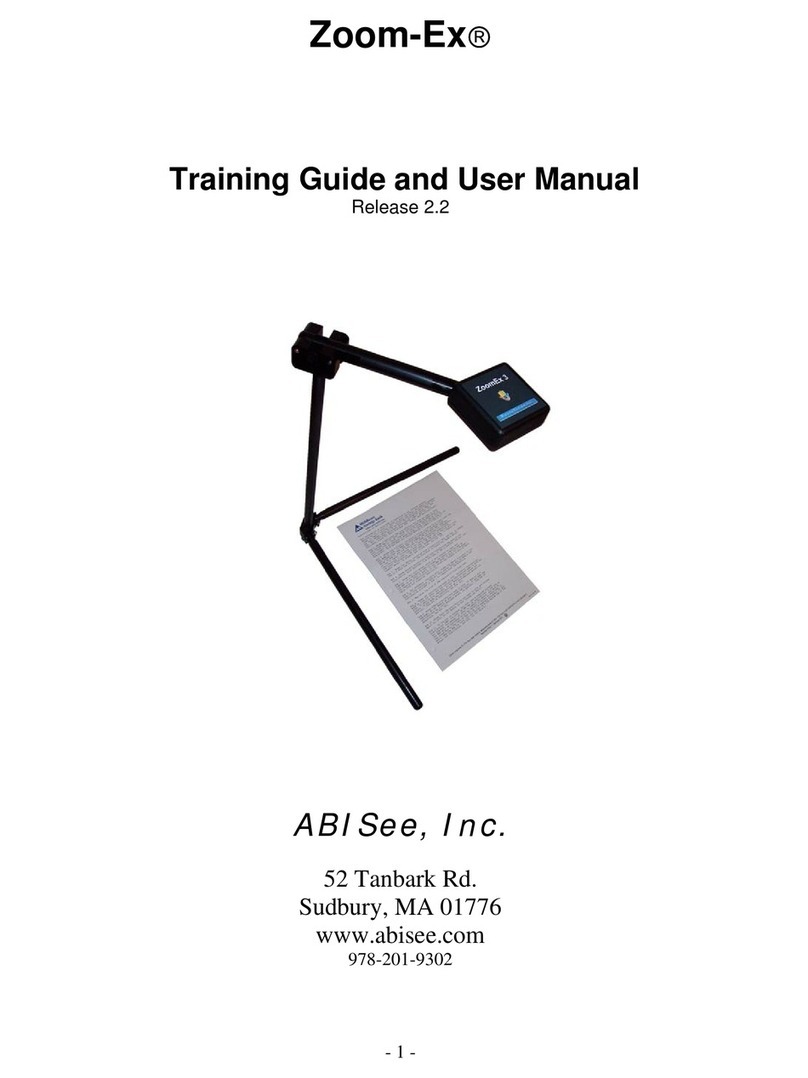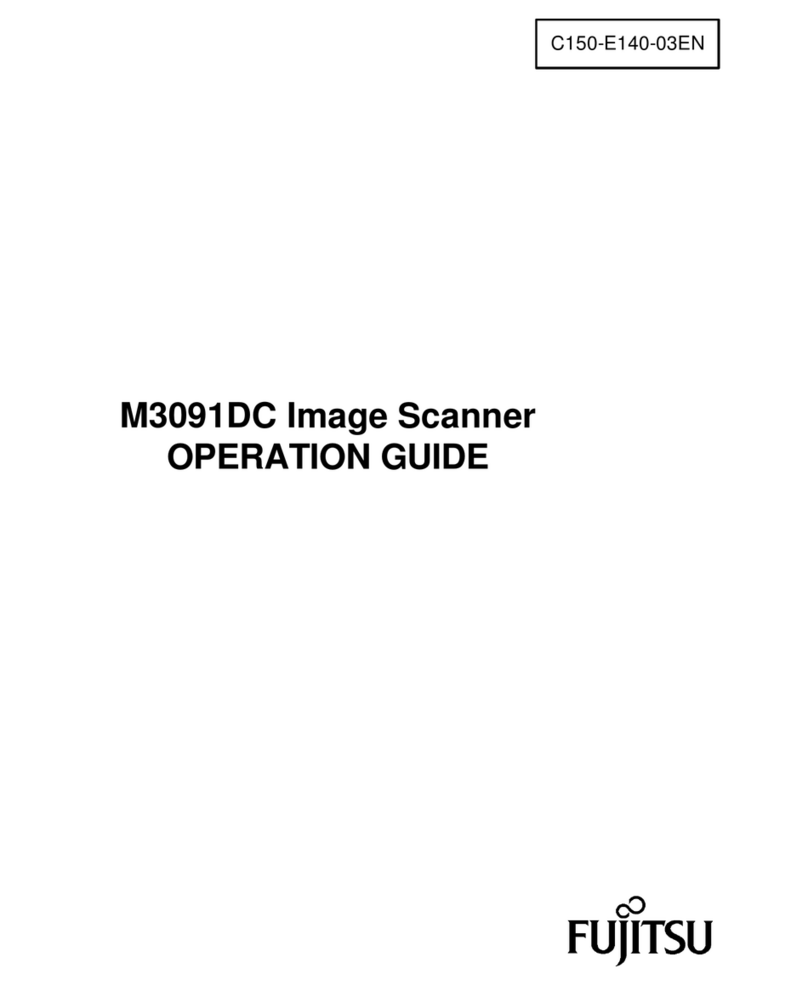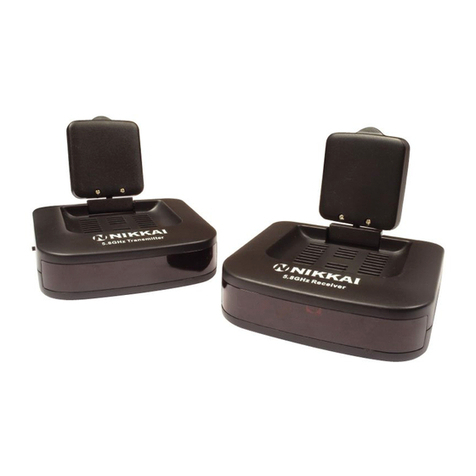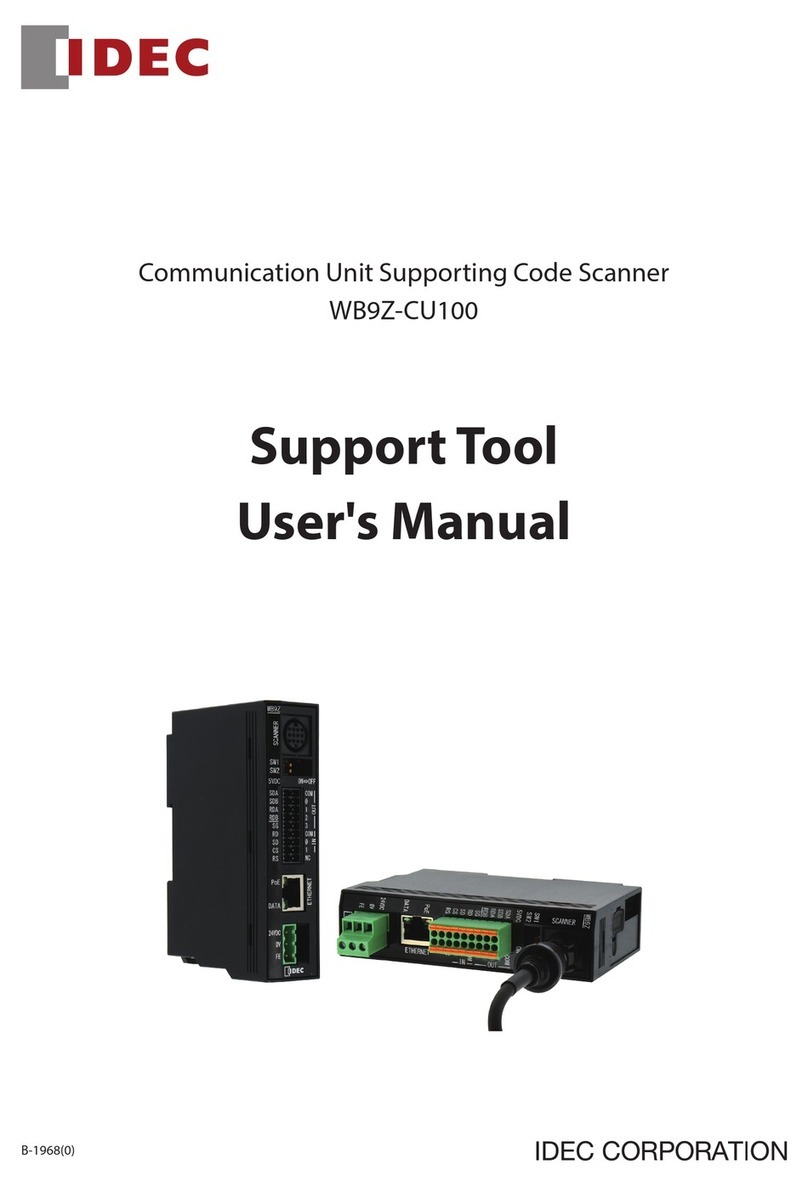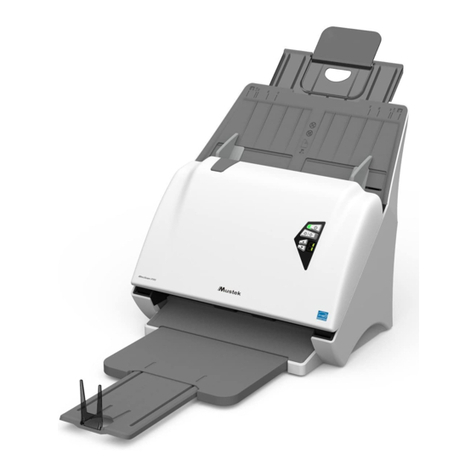Hitachi Aloka Medical ASU-1003 User manual

i
MN1-5008 Rev.7MN1-5008 Rev.8
Transvaginal Electronic Convex Sector Scanner
ASU-1003
Instruction Manual
MN1-5008 Rev.8

MN1-5008 Rev.7
ii

iii
MN1-5008 Rev.7
This is an instruction for model ASU-1003, an ultrasound scanner.
Read the manual carefully before using the equipment. Take special note of the items in section 1 "Safety
Precautions".
Keep this manual securely for future reference.
The CE mark on the scanner indicates that this scanner is valid when it is connected to the ultrasound
diagnostic instrument bearing the CE mark that is specied as available in section 2 of this document.
Therefore, if a scanner bearing the CE mark is connected to the ultrasound diagnostic instrument in that is
specied as available but does not have a CE mark, part of this instruction manual may not apply.
Symbols used in this document
The terms below are used in the safety information provided to prevent hazards and injuries to the operator
or patients. The severities of the hazard and injury that can occur when failing to observe the displayed
safety information are indicated in four levels: "Danger","Warning","Caution" and "Note".
Danger
Indicates an imminently hazardous situation which, if not avoided, will result in death or serious injury to
the operator or patient.
Warning
Indicates a potentially hazardous situation which, if not avoided, could result in death or serious injury to
the operator or patient.
Caution
Indicates a potentially hazardous situation which, if not avoided, may result in minor or moderate injury
to the operator or patient, or property damage only.
Note
Indicates a strong request concerning an item that must be observed in order to prevent damage or
deterioration of the equipment and also to ensure that it is used efciently.
The type of safety information is indicated by the symbols below.
This symbol means attention is required.
This symbol means that the described action is prohibited.
This symbol means the described action is mandatory.
Introduction

MN1-5008 Rev.7
iv
CONTENTS
1. Safety Precautions
1-1. Intended use......................................................................................................................1
1-2. Usage precautions.............................................................................................................1
1-2-1. Warnings and safety information....................................................................................................2
1-2-2. Option usage precautions ...............................................................................................................4
1-2-3. Washing, disinfection and sterilization precautions .......................................................................5
1-2-4. Labels .............................................................................................................................................6
2. Specications and Parts name
2-1. Principles of operation....................................................................................................11
2-2. Specications..................................................................................................................12
2-3. Performance....................................................................................................................13
2-4. Names of each parts........................................................................................................13
2-5. Environmental conditions...............................................................................................14
2-5-1. Operating environmental conditions..............................................................................14
2-5-2. Storage environmental conditions.................................................................................14
2-6. Classication of ME equipment .....................................................................................14
3. Preparations for Use
3-1. Start up check .................................................................................................................15
3-1-1. Visual check .............................................................................................................15
3-1-2. Verication of washing, disinfection and sterilization.......................................................15
3-1-3. Verication of operation..............................................................................................15
4. Usage
4-1. Operation ........................................................................................................................17
4-2. Mounting of rubber boot.................................................................................................18
4-3. Removal of rubber boot..................................................................................................19
4-4. Connecting to the ultrasound diagnostic instrument ......................................................20
4-5. Removing from the ultrasound diagnostic instrument ...................................................21
4-6. Actions to be taken when an abnormal state is detected.................................................22
4-6-1. Ensuring safety of patients ..........................................................................................22
4-6-2. Handling the ultrasound diagnostic instrument................................................................22

v
MN1-5008 Rev.7
5. Washing, Disinfection and Sterilization
5-1. Washing ..........................................................................................................................24
5-1-1. Insertion portion and handle........................................................................................24
5-1-2. Cable and connector...................................................................................................24
5-2. Disinfection ....................................................................................................................25
5-2-1. Chemical disinfection.................................................................................................25
5-2-2. Gas disinfection ........................................................................................................26
5-3. Sterilization.....................................................................................................................27
5-3-1. Liquid sterilization ...................................................................................................................... 27
6. Storage
6-1. Actions before storing the scanner..................................................................................29
6-2. Environmental conditions for storage.............................................................................29
7. Moving and Transporting
7-1. Moving and transporting ................................................................................................31
7-2. Preparing the scanner for moving...................................................................................31
7-3. Packing for transportation ..............................................................................................31
7-4. Environmental conditions during transportation ............................................................31
8. Periodic Inspection
8-1. Safety tests......................................................................................................................33
8-2. Testing of measurement tolerances.................................................................................34
8-2-1. Conducting tests ...........................................................................................................34
8-2-2. Result judgment............................................................................................................34
9. Conguration
9-1. Standard conguration....................................................................................................35
9-2. Options............................................................................................................................35
10. Disposal of the Device .......................................................................................................37
This Instruction Manual contains the main body of 38pages and 5pages until the CONTENTS.

MN1-5008 Rev.7
vi

-1-
MN1-5008 Rev. 7
1. Safety Precautions
1-1. Intended use
This scanner is intended for use by a doctor or other qualied operator for inserting to a human vagina and
making ultrasonic observations of the uterus and surrounding organs.
Caution
Do not use this equipment for other than its intended purpose.
Use for other purposes can cause burns or other injuries to the patient or operator.
1-2. Usage precautions
The terms below are used in the safety information provided to prevent hazards and injuries to the operator
or patients. The severities of the hazard and injury that can occur when failing to observe the displayed
safety information are indicated in four levels: "Danger","War ning","Caution" and "Note".
Danger
Indicates an imminently hazardous situation which, if not avoided, will result in death or serious injury to
the operator or patient.
Warning
Indicates a potentially hazardous situation which, if not avoided, could result in death or serious injury to
the operator or patient.
Caution
Indicates a potentially hazardous situation which, if not avoided, may result in minor or moderate injury
to the operator or patient, or property damage only.
Note
Indicates a strong request concerning an item that must be observed in order to prevent damage or
deterioration of the equipment and also to ensure that it is used efciently.
The type of safety information is indicated by the symbols below.
This symbol means attention is required.
This symbol means that the described action is prohibited.
This symbol means the described action is mandatory.

-2-
MN1-5008 Rev. 7
1-2-1. Warnings and safety information
Warning
Follow the information in this manual and the documentation supplied with any equipment used
together with this scanner.
Use that is not in accordance with the supplied documentation can result in a serious or moderate
injury, equipment breakdown, or physical damage that impairs operation.
Be sure to preparations for use.
Use the scanner without noticing an abnormal condition can result in injury to the operator or
patient. If any abnormalities are noted on the scanner in the start up check, immediately stop use
the scanner and contact one of our ofces and/or distributor's ofces listed on the back cover.
See section 3-1 “Start up check”.
Do not use on the eyes.
This scanner is not intended for use on the eyes. The acoustic output can have an adverse effect on
the eyes.
Do not attempt to disassemble, modify, or repair the scanner.
Electric shock or other unforeseen accidents could result. Contact one of our ofces and/or
distributor's ofces listed on the back cover to request repair.
Clean, disinfect and sterilize before using the scanner as necessary.
Perform properly wash, disinfect and sterilize after use.
Otherwise, there is a risk of infection. Note that the scanner is not sterilized at the factory.
Before using the scanner rst, be sure to wash, disinfect and sterilize it as required.
Wear medical gloves during examination.
Conducting examinations with the bare hands can expose the operator to a risk of infection.
Dispose of scanners used for patients with Creutzfeldt-Jakob disease.
Otherwise, there is a risk of infection to the operator or patient. Currently, there are no methods
for washing, disinfecting and sterilizing scanners which have been used on patients aficted by
Creutzfeldt-Jacob disease.
When using ultrasound contrast agent, follow the supplied documentation.
Unexpected accidents could result. Check the state of the patient and take appropriate precautions
to avoid side effects.
Do not use the scanner fallen on to oor.
Otherwise, there is a risk of infection. Stop the operation and perform the procedure in section 8
"Periodic Inspection", section 5 "Washing, Disinfection and Sterilization" and section 3-1 "Start up
check".
Caution
Constantly check for anything abnormal about the patient’s condition and scanner.
Continued use without noticing that an abnormal condition has occurred can result in an electric
shock and injury to the operator or patient. If an abnormal condition occurs, immediately move the
scanner away from the patient and stop use of the scanner.
The scanner is vulnerable to damage by impact. Therefore, handle it with care.
There is a risk of damage to the scanner when the scanner is fallen or hit somewhere.
Do not use this scanner with other equipment except for those specically approved in the manual.
Use with unapproved equipment can result in an electric shock, burn, or other injury to the patient
or operator and damage to the scanner and the other equipment.

-3-
MN1-5008 Rev. 7
Caution
Scan for the minimum length of time necessary for the diagnosis and at the lowest suitable output.
Overuse can adversely affect the internal tissues of the patient.
For details about the acoustic output, please refer to the documentation supplied with the ultrasound
diagnostic instrument.
Regularly perform maintenance of the equipment specied in this manual.
Long-term use of the equipment, could reduce the performance, or cause smoke or re.
If nds any abnormal condition, immediately stop use the equipment and contact one of our ofces
and/or distributor's ofces listed on the back cover.
Use, move and transport the scanner under the environmental conditions specied in this manual.
Otherwise, it may be damaged.
See section 2-5 "Environmental conditions" and section 7-4 "Environmental conditions during
transportation".

-4-
MN1-5008 Rev. 7
1-2-2. Option usage precautions
Warning
Use by covering the rubber boot over the insertion portion.
If the rubber boot is not used, residual pathogens on the scanner could infect the patient.
Use Aloka-approved rubber boots only.
Use of an item lacking biocompatibility can cause an adverse reaction by the body of the patient.
Check that the rubber boot is sterilized.
Use of an infected item could spread infection to the patient.
Do not reuse the rubber boot.
Use of an infected item could spread infection to the patient.
Do not apply unsterilized acoustic medium to the outer surface of the rubber boot.
Use of an acoustic medium that is contaminated by a pathogen can cause an infection on the
patient.
Do not use on patients who may have an allergic reaction to latex products.
Use of the rubber boot for these types of patients could result in anaphylactic shock. Ask the patient
about allergy history beforehand.
Caution
Check the rubber boot for abnormalities before use.
Store the rubber boots in a cool, dry location not exposed to direct sunlight and do not use rubber
boots that have exceeded their expiration date (for items where the expiration date is not displayed;
2 years from the displayed sterilization date) or severe discoloration, cracks, or other visible defects
nds.
Check that the acoustic medium has no air bubbles inside the rubber boot that is covering the
scanner.
Air bubbles inside the rubber boot can result in misdiagnosis caused by overlooking or
misinterpreting lesions due to poor image quality or improper rendering.

-5-
MN1-5008 Rev. 7
1-2-3. Washing, disinfection and sterilization precautions
Caution
Do not place the insertion portion and handle in any liquids
beyond the range shown in the gure right.
The connector which liquid has intruded can cause the
malfunction of the probe and the ultrasound diagnostic
instrument. In this case immediately stop use and contact one
of our ofces and/or distributor's ofces listed on the back
cover.
Warning
Wear protective gloves and other protective gear during washing, disinfection and sterilization.
Handling of the scanner with bare hands before disinfection or sterilization can result in an
infection.
After soaking in cleaning agents, thoroughly wash the scanner with running water.
Residual cleaning agents can cause an adverse reaction on the bodies of the operator or patient.
After chemical disinfection and sterilization, thoroughly wash the scanner with sterilized water.
Residual chemicals can cause an adverse reaction on the bodies of the operator or patient.
Perform aeration completely after gas disinfection.
Residual gas can cause an adverse reaction on the bodies of the operator or patient.
Do not wash, disinfect or sterilize using procedures other than those specied in this manual.
Infection could result due to incomplete washing disinfection or sterilization. It can also result in
damage to the scanner or reduced performance. Using the damaged scanner has occurred can result
in an electric shock and injury to the operator or patient.
The probe cannot withstand autoclave sterilization or boiling and other types of sterilization at
temperatures exceeding 60°C (140°F).
For details on the usage conditions of chemicals and sterilization procedures, refer to the
documentation supplied with the respective chemical or sterilization equipment.
Infection could result due to incomplete disinfection or sterilization.
This could also cause deterioration of the scanner.
Water or chemical solution
150mm or less

-6-
MN1-5008 Rev. 7
Label 3
Label 2
Label 1
Label 1
Electronic convex scanner mark
Frequency
1-2-4. Labels
(1) Scanner unit
ASU‑1003
ASU‑1003

-7-
MN1-5008 Rev. 7
Label 3
Label 2
This equipment complies with Directive 93/42/EEC relating to
Medical Device.
IPX7 mark
See section 2-2, “Specications”.
Type BF applied part
Do not waste the equipment as general waste.
Comply with a local regulation.
See section 10.
Manufacturer
Model, Serial No.
Safety warning sign
Biohazard
See section 5.
Follow the instruction manual to operate this equipment.
If not avoided, may result in injury, property damage, or the
equipment trouble.
IPX7

-8-
MN1-5008 Rev. 7
Label A
(2) Storage case
Label B

-9-
MN1-5008 Rev. 7MN1-5008 Rev. 8
Label A
Model
Serial No.
Label B
2012
This equipment complies with Directive 93/42/EEC
relating to Medical Device.
DATE OF MANUFACTURE
(in case of 2012)
MANUFACTURER
2012

-10 -
MN1-5008 Rev. 7
MN1-5008 Rev. 8
Use by
Do not reuse
Keep away from sunlight
(3) rubber boot
Label for 1 piece
Contains or presence natural rubber latex
Non sterile
Lot number
Label for 10 pieces
10 pieces
RUBBER BOOT
RB‑945BP‑NS
LOT
MADE IN JAPAN

-11-
MN1-5008 Rev. 7
2. Specications and Parts name
2-1. Principles of operation
This scanner and the ultrasound diagnostic instrument enable image diagnosis using ultrasonic waves. These
equipments operate under the principles described below.
(1) When an electric pulse signal is applied from the transmitter to the transducer of the scanner, the
transducer operates by converting electrical vibrations to mechanical vibration energy for emitting
pulse-shaped ultrasonic waves into the body part contacting the transducer or into liquid or other
medium.
(2) The emitted ultrasonic waves are reected by boundaries with different acoustic characteristics (acoustic
impedance) within the body.
(3) The transducer is also used to receive reected ultrasonic waves. The transducer vibrates mechanically
due to the received ultrasonic vibrations and uses an electro-mechanical conversion operation to
convert the received mechanical vibrations to electric energy. The received echo is also converted to
electric signals and a brightness modulation operation is used to convert the electric pulses to shades of
brightness for forming an image.
(4) The transducer is moved mechanically to enable changing of the scanning surface for sliced images.

-12-
MN1-5008 Rev. 7
2-2. Specications
Application regions: Obstetric and gynecological areas
Form of application to patient: Transvaginal
Connectable instruments: SSD-1000, SSD-3500, SSD-4000
Electronic scan eld of view: 160 °
Mechanical scan eld of view: 90 °
Frequency: 6.0MHz
Cable length: 2.0 m
Weight: 1,350 g
Service life: Three years
Range of applied part: As shown in the gure below.
Parts treated as applied parts: As shown in the gure below
IPX7 range: As shown in the gure below.
External dimensions: As shown in the gure below.
Unit: mm
Remarks
The dimensions and weight are within ±10% of the indicated values.
Cable length
Range of applied part
Parts treated as applied parts
IPX7 range
φ41
φ24.8
323
1000
140

-13-
MN1-5008 Rev. 7
2-3. Performance
For measurement tolerances, operating tolerances and other data, refer to the instruction manual for the
ultrasound diagnostic instrument.
2-4. Names of each parts
Caution
Do not pull, bend, twist, or apply excessive force to the cable.
The conductors may break and the cable may become unusable.
Do not subject the ultrasonic irradiation area to hard impact.
This could make the scanner unusable.
Rubber boot
This covers the insertion portion
for preventing infection. Follow
the instructions in section 4-2.
Insertion portion
The component that is inserted into
the patient.
Handle
This section is held when
performing insertion.
Connector
This is the part that connects the ultrasound
diagnostic instrument and scanner. Follow
the instructions in section 4-4.
Cable
This cable propagates the
ultrasonic signals that are
sent and received.
Ultrasonic irradiation area
This incorporates an electronic
convex transducer.
The protrusion corresponds
to the front mark (direction
mark) on the image display.
This mark indicates the way of
mechanical drive in Vol-mode.

-14 -
MN1-5008 Rev. 7
2-5. Environmental conditions
Use and store the scanner under the following conditions.
2-5-1. Operating environmental conditions
Ambient temperature: 15°C to 40°C
59°F to 104°F
Relative humidity: 30% to 75%
Atmospheric pressure: 700 hPa to 1060 hPa
Altitude: 3,000 m or less
2-5-2. Storage environmental conditions
Ambient temperature: 0°C to 50°C
32°F to 122°F
Relative humidity: 10% to 90%
Atmospheric pressure: 700 hPa to 1060 hPa
Caution
Avoid operating or storing the scanner in the following locations.
• Locations exposed to water or other liquids
• Locations subject to adverse conditions such as air pressure, temperature, humidity, ventilation,
direct sunlight, dust, or air containing salt, sulfur, or other corrosive substances
• Locations where chemical substances are stored or where gases are generated
Storage in these locations can result in a breakdown or reduced performance.
Avoid rapid temperature change which may cause condensation. Avoid using in locations where
condensation or water droplets can form.
Condensation can occur when moving the scanner from a cool location to a warm one. Use when
condensation has occurred can result in a breakdown or reduced performance.
2-6. Classication of ME equipment
• Classication based on degree of protection against electric shock . Type BF applied Part
• Classication for protection against ingress of liquids ..................... IPX7 (Watertight equipment)
• Operation mode ................................................................................. Continuous operation
• Method of sterilization ...................................................................... See section 5 “Washing, Disinfection
and Sterilization”
For the range of applied parts, parts treated as applied parts and the range of IPX7, see section 2-2.
Table of contents
Popular Scanner manuals by other brands
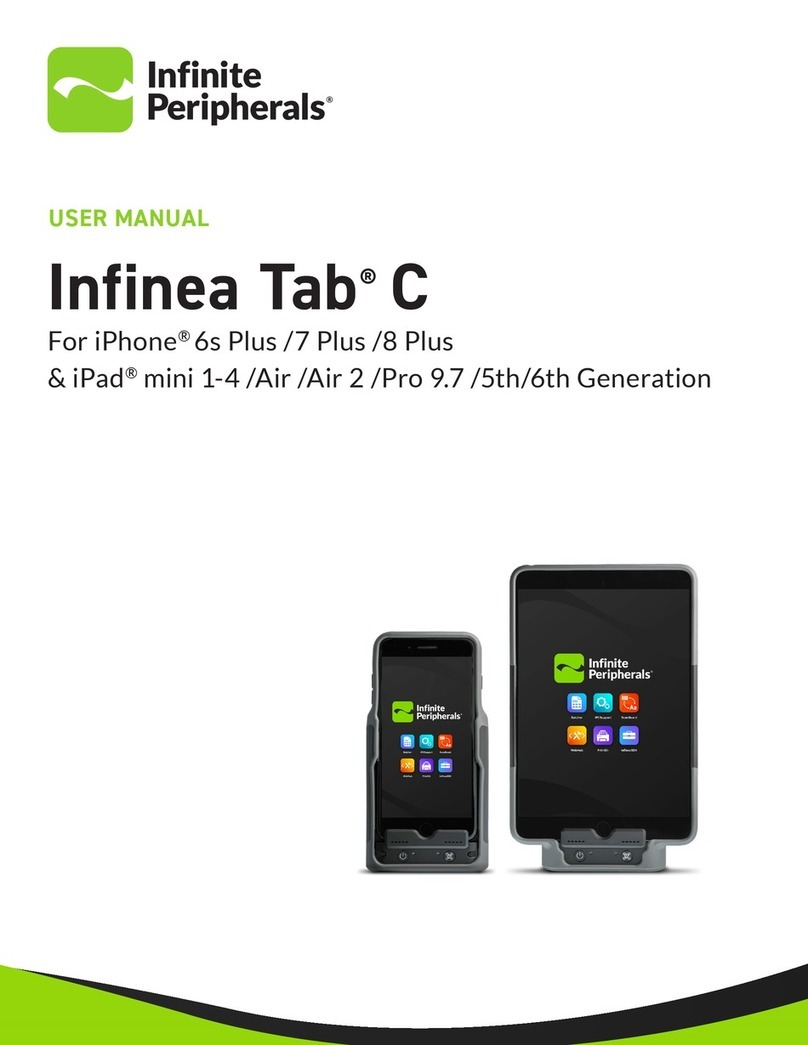
Infinite Peripherals
Infinite Peripherals Infinea Tab C user manual
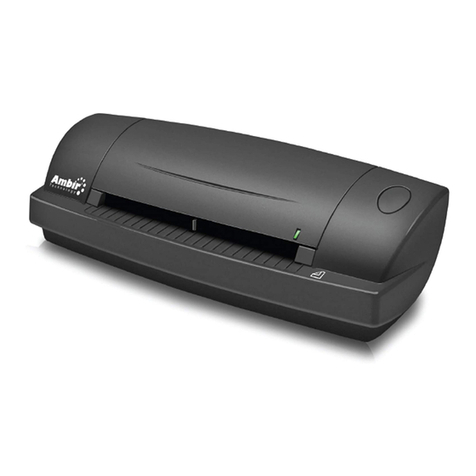
Ambir
Ambir DocketPORT 687 user guide

HEIDENHAIN
HEIDENHAIN AK LIP 607 Mounting instructions
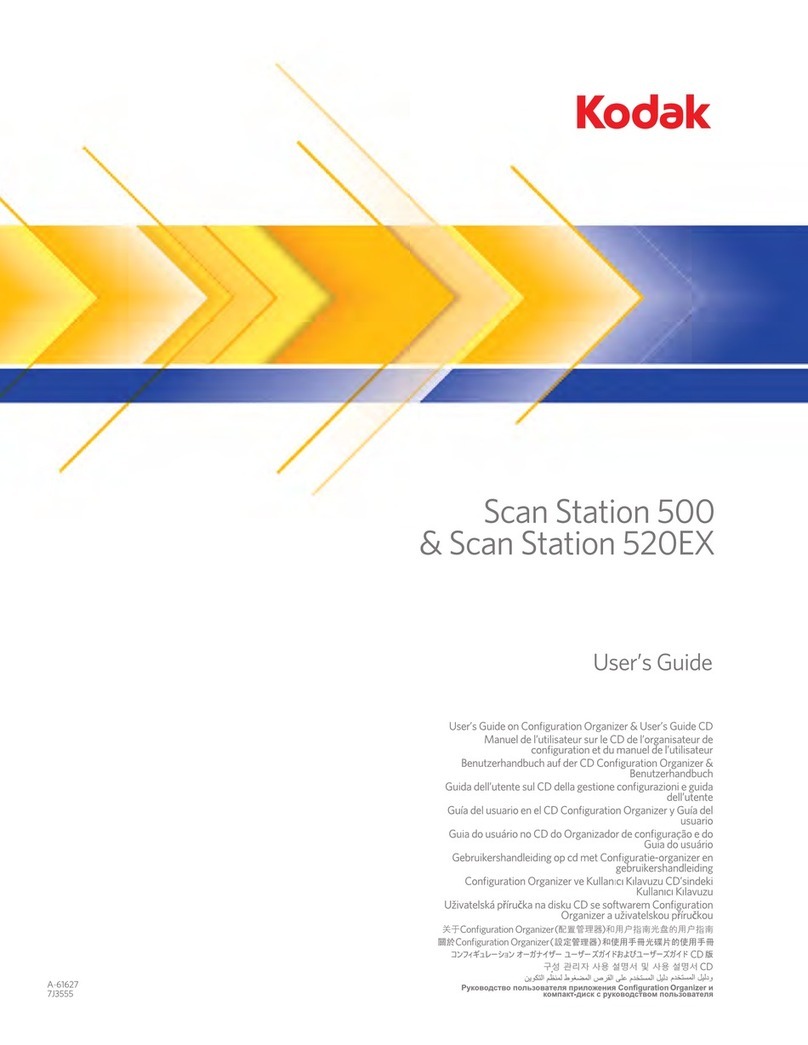
Kodak
Kodak 8738056 - Scan Station 500 user guide

Datalogic
Datalogic Magellan 9800i Quick reference guide

SAVEO
SAVEO SAVEO-PKT2 Series Quick setup guide
